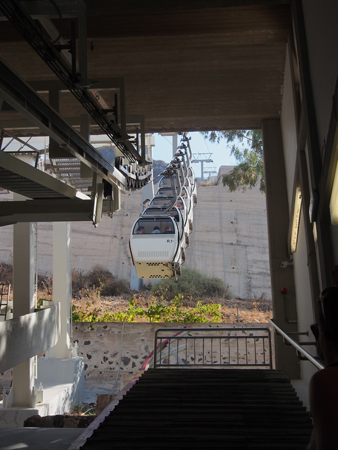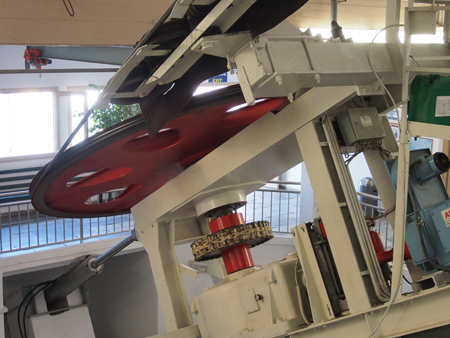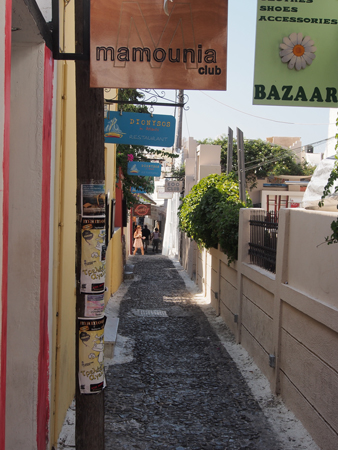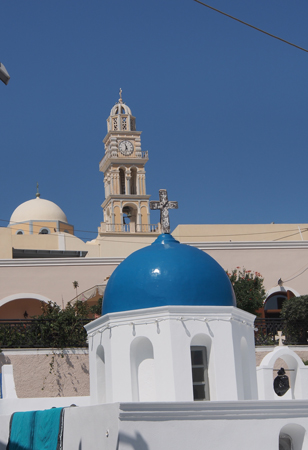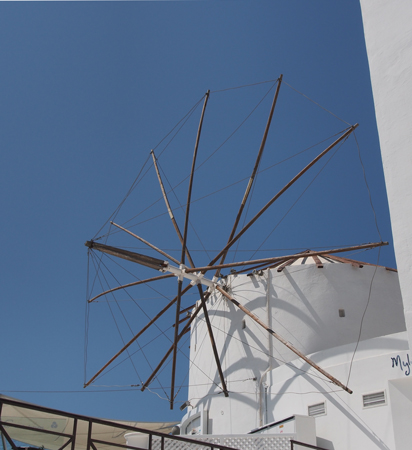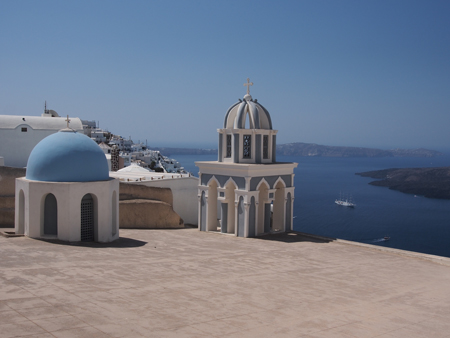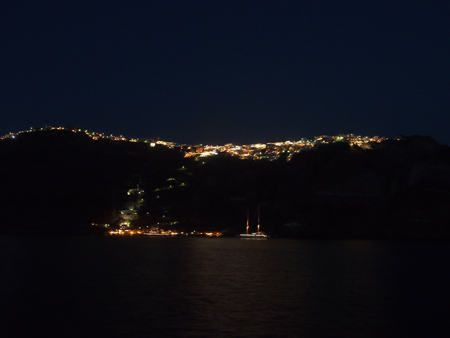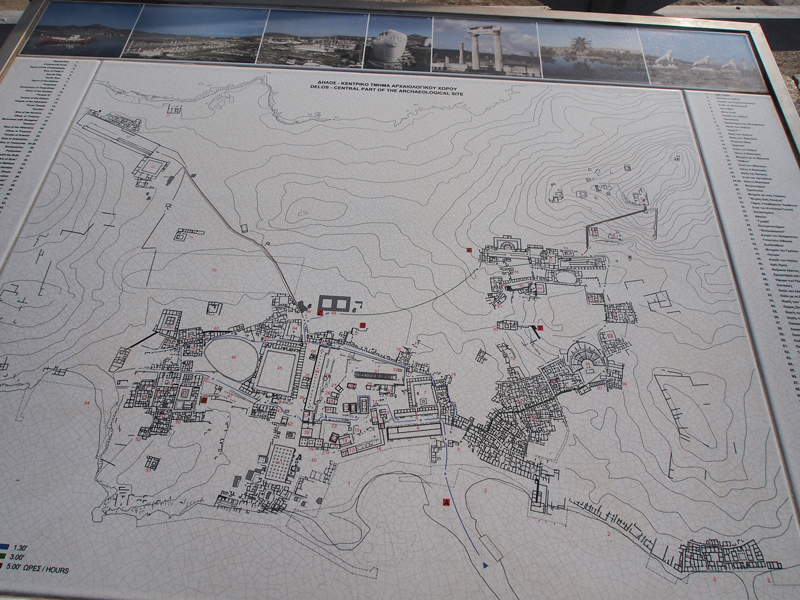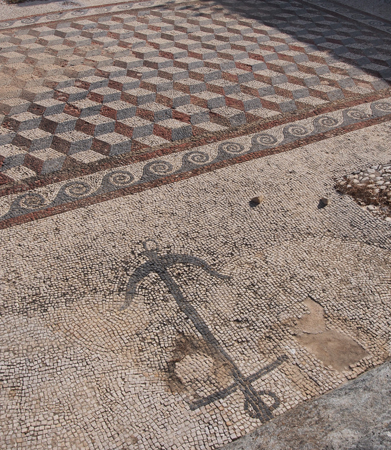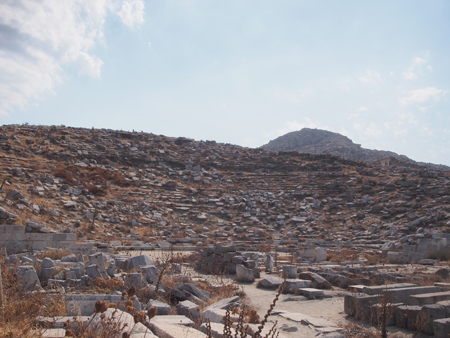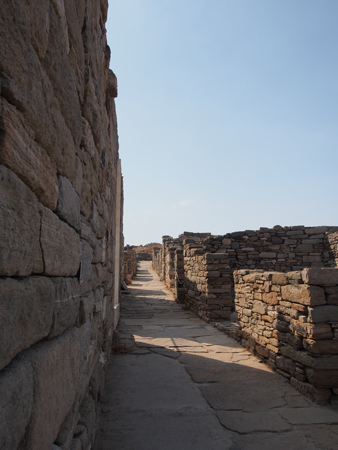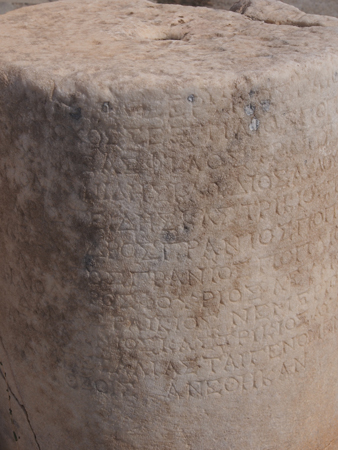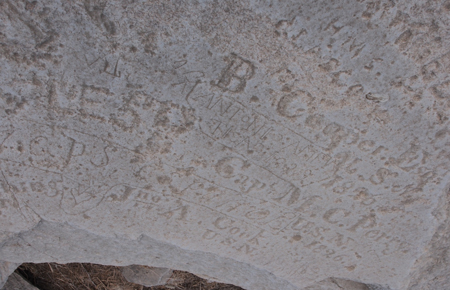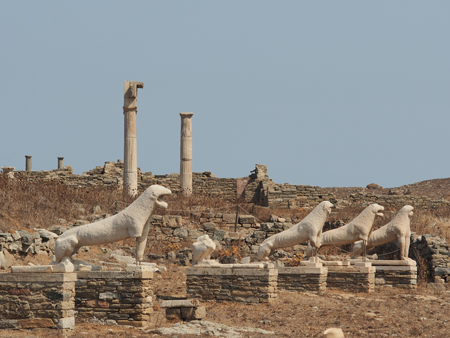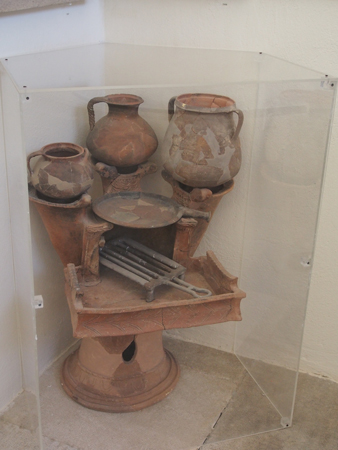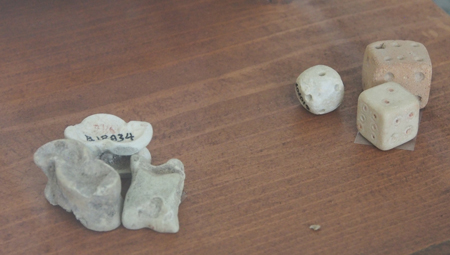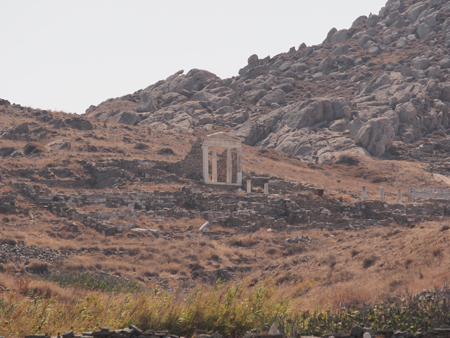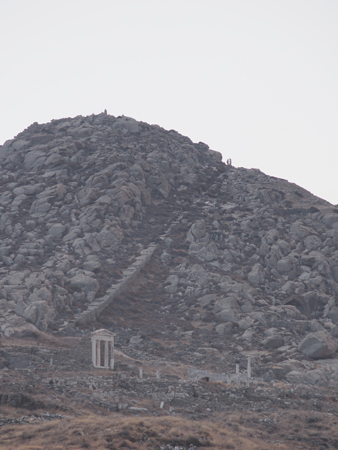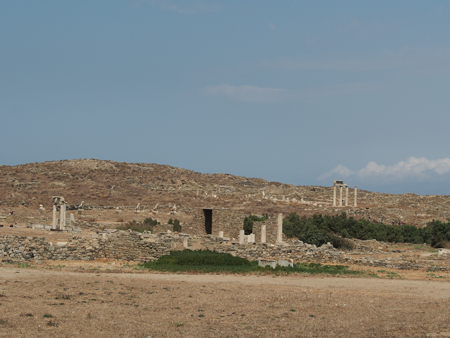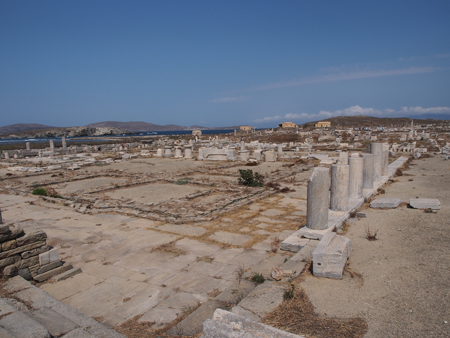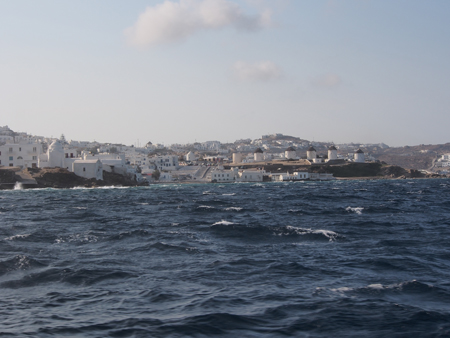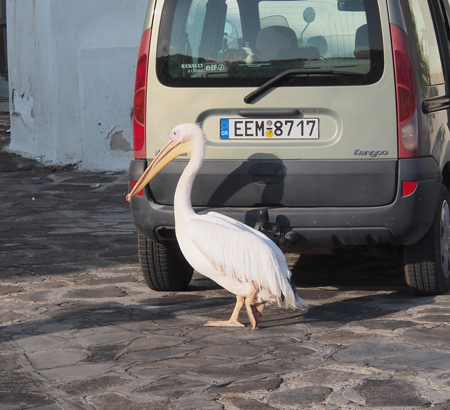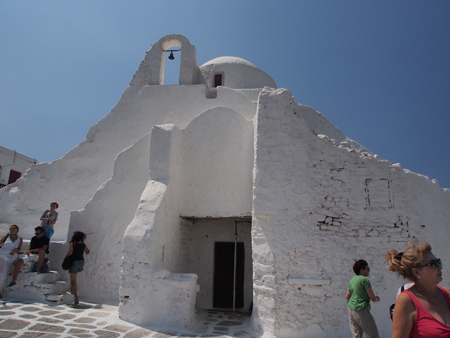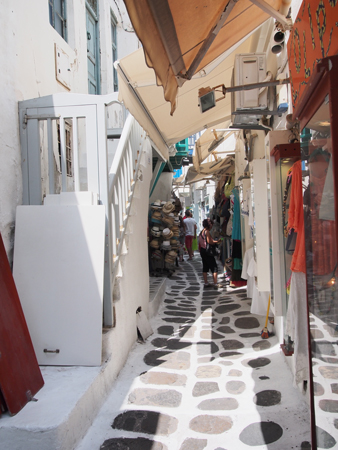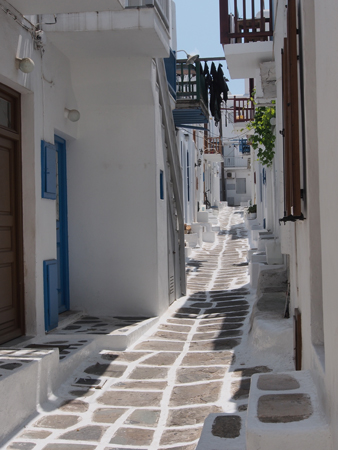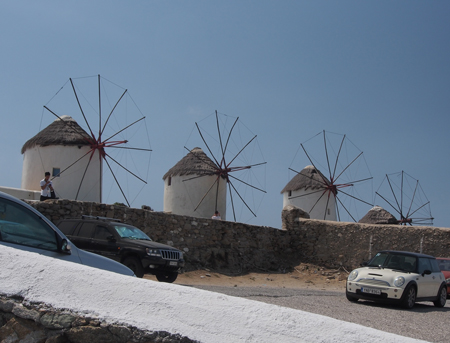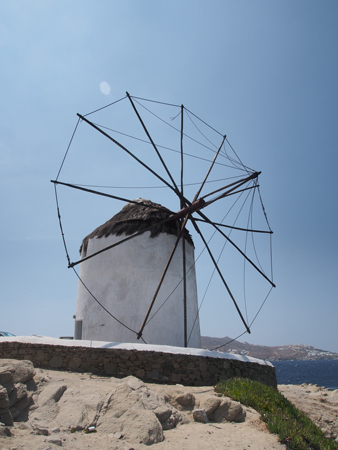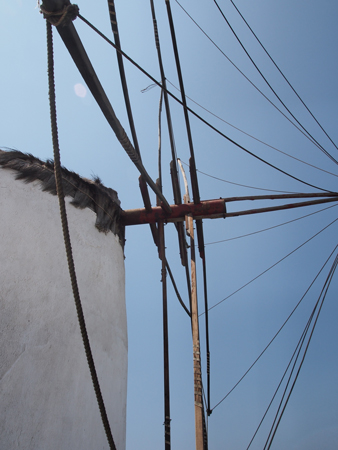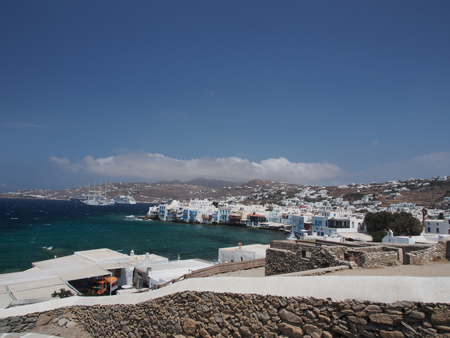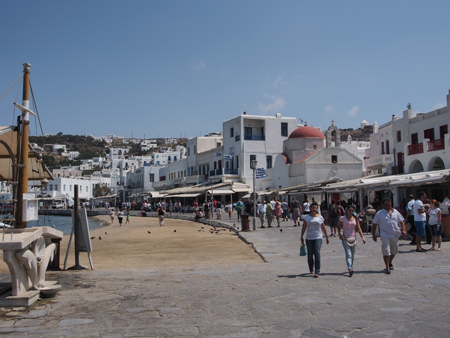Thurs., 8/22/13 - Santorini, Greece
We anchored out in the crater opposite the cable car to the top of the town of Fira. We were lucky in that we were the only large ship here today. The cable car and town were not jam packed with cruise ship passengers and the weather was not as hot and humid as it was on our last visit here. We spent three hours walking around town 1000 feet above sea level. The views of the island and bay and white buildings posed like icing on top of the steep cliffs were spectacular.
Cable car
|
Cable car mechanism |
Santorini street scene
|
Blue dome of Santorini |
Once a windmill
|
More blue domes |
Santorini at night during the sail-away
|
|
Fri., 8/23/13 - Mykonos, Greece
We had to get up early this morning for our optional excursion to the island of Delos. We had to tender into the harbor at Mykonos and then ferry (1/2 hour ride) to Delos. The sea was rough from a strong wind and we bounced and splashed rather vigorously. The wind, however, kept the tour of the Greek ruins much cooler than the other days on this trip.
Delos is a small rocky island four miles long and one mile wide. It is the mythical birthplace of the twins, Apollo and Artemis. In the 1960's archeologists began to uncover some of the ancient structures. Only one sixth of the island has been excavated and efforts now are to maintain what has been uncovered and let the rest remain preserved under the sand. Delos is now a national museum and a UNESCO World Heritage Site.
We walked through the harbor area and the houses of the wealthy merchants. Many of the floors have the mosaic patterns preserved: 320 mosaic floors have been exposed. The quarter inch chips were made from refuse of marble carvings (the white and black colors) and pottery and terra cotta shards (mostly red and yellow).
We looked at columns and tried to envision the two-acre Temple of Apollo. There were many temples here and even an early synagogue because of the multinational population working here as traders.
Unfortunately, as with most of these sites, the marble was often knocked down and used to build other buildings and the intact statues and friezes were transported to museums in Britain, USA, Germany, etc. The whole island is all covered or uncovered ruins. No one lives on the island except guards hired to prevent further stealing. Ruins are also in the sea, so no one is allowed to swim either. In the museum, we saw more of the ankle bones used in games – such as we saw in Mongolia.
| Return to Top | Return to Itinerary | Return to Trips page to view other trips | Return to Dreamcatcher Home Page |
